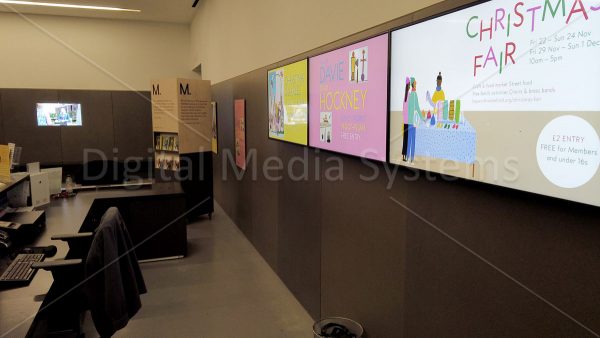Digital Signage in Museums
Digital signage is very widespread these days but what makes it particularly useful in museums?
1. Digital signs can be used at the entrance and in reception to show welcome messages, general information and prices where applicable in multiple languages. In addition the digital screens can also be used to display information about the various exhibits and help people plan their route as well as showing information baout future exhibitions.
2. Exhibitions can be complimented by video, images and content displayed on digital displays to make the museum displays more appealing. Using videos, animation and slide shows is much more effective than static content for engaging with visitors.

3. Museum digital signage can allow interactive learning which is important for museums, especially younger visitors. It can allow visitors to select content via touch screen, test their knowledge or add fun features especially when combined with in built cameras, eg. take photos of visitors with all kings of special effects.
4. Digital signage screens can be placed at various points in the museum to offer directions and give directions in response to visitor input via touch screen.
5. Incorporating cameras and analytics software into the museum digital signage installation allows visitor analytics to be collected. This can track how many visitors visited various parts of the museum and which exhibits were the most popular and help with future planning of exhibitions and layout to maximise customer experience.
As it can be seen, digital signage in museums is very beneficial and something every museum should consider. We recently installed digital screens at The Hepworth Wakefield Museum – click here to view.
For more information on digital signage solutions please contact us.
Latest News
- Exterior Digital Signage Solutions January 31, 2024
- What are Digital Display Totems? December 29, 2023
- TOP 10 things to include in your Outdoor Digital Signage tender October 30, 2023
- What Are Electronic Notice Boards? August 21, 2023
- Benefits of Digital Out-of-Home (DOOH) Advertising Screens June 28, 2023
